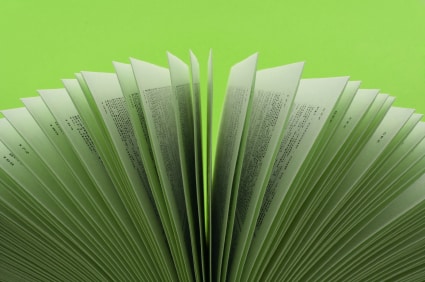Green business printing
Green practices have been a hot topic for awhile now so it's no surprise that they've made their way to the realm of business printing.

Green practices have been a hot topic for a while now, so it’s no surprise that they’ve made their way into the realm of business printing.
No, we’re not suggesting that green is the new black (or, in the case of standard printing paper – white) and that businesses should run out and stock up on reams of green-coloured paper. We’re using the word “green” in the metaphorical sense – to describe environmentally-efficient business printing.
It’s no great surprise that paper production is one of the biggest offenders when it comes to the consumption of fossil fuels and is a major contributor to that big hole in the ozone we hear so much about. Given these grim observations, it doesn’t take a genius to work out that the less paper that’s used, the better for the environment.
Commercial printing and business printing paper wastage is at an all-time high. With so many other matters on the agenda, coming up with ways to reduce their carbon footprint is a low priority.
While “thinking green” is not a new concept, it’s been slow to catch on in the commercial printing world. One of the reasons for this is the misconception that green business printing means a lower grade of printing. When thinking about recycled paper, businesses conjure up images of brown-sludge-coloured paper and instantly dismiss it as appropriate marketing material.
However, that brownish lumpy paper is a thing of the past, and it’s now almost impossible to tell the difference between recycled and “normal” (virgin fibre) paper. There’s also a belief that green printing is much more expensive than standard business printing. This is definitely not the case, with many commercial printing companies recognising the importance of environmental-friendly printing and offering it as part of their regular service for no, or a fairly minimal, additional charge.
So, what are the top ways businesses can “green up” their commercial printing techniques? In most cases, it comes down to smart paper and ink selection:
- Choose paper that’s 100% recyclable and certified by the Forest Stewardship Council (FSC).
- Where possible, print double-sided to save paper.
- Reduce the amount of ink you use by opting for one or two colour designs.
- Make sure your printer is using vegetable-based inks or soy inks instead of petroleum-based inks. These alternatives are lower in nasty Volatile Organic Compounds (VOCs).
- Look for a printer that uses renewable sources and is “carbon neutral” by offsetting their emissions.
- Avoid using unnecessary packaging/adhesives, especially around large brochures.